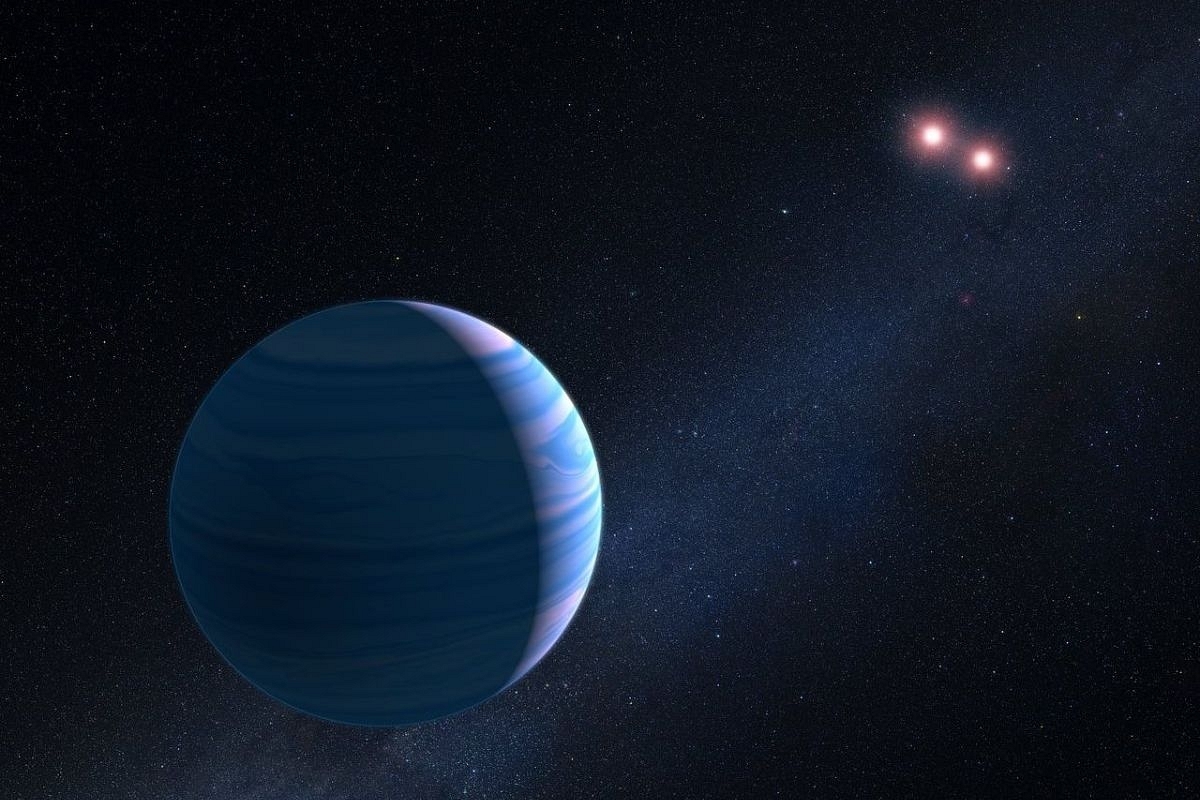News Brief
Indian Scientists Find New Method To Study Environment Of Exoplanets Using Polarisation Of Light

(Pic Via Wikipedia)
Indian Astronomers have found a new method to understand the atmosphere of extra solar planets. They have shown that planets going around stars other than the Sun can be studied by observing the polarisation of light and studying polarisation signatures.
These polarisation signatures or variations in scattering intensity of light can be observed with existing instruments, thus expanding the study of planets beyond the solar system using existing instruments.
In the recent past, astronomers have discovered that many other stars have planets going around them, like our Solar System. Till now, around 5000 such exoplanets have been detected, the Ministry of Science and Technology said on Tuesday (2 November).
About a couple of decades ago, Sujan Sengupta, a scientist at Indian Institute of Astrophysics (IIA), Bangalore suggested that the thermal radiation of hot young planets and the reflected light of planets orbiting other stars, known as extra-solar planets or exoplanets would also be polarised and the measure of the polarisation might unveil the chemical composition and other properties of the exoplanetary atmosphere.
Subsequent confirmation of the prediction by the detection of polarisation of many Brown Dwarfs, a kind of failed stars that have an atmosphere very similar to that of Jupiter, motivated researchers all over the world to build highly sensitive polarimeters and use polarimetric methods to probe exoplanetary environment, the ministry said.
Recently, Aritra Chakrabarty, a postdoctoral researcher at IIA working with Sujan Sengupta, developed a detailed three-dimensional numerical method and simulated the polarisation of exoplanets.
In the research published in ‘The Astrophysical Journal,’ the scientists have developed a Python-based numerical code that incorporates a state-of-the-art planetary atmosphere model and employed all such asymmetries of an exoplanet orbiting the parent star at different inclination angles, the ministry said.
They calculated the amount of polarisation at different latitudes and longitudes of the planetary surface defined with respect to the disk center and averaged them over the illuminated and rotation-induced oblate planetary surface. The polarization at different wavelengths is sufficiently high and hence can be detected even by a simple polarimeter if the starlight is blocked. It helps study the atmosphere of the exoplanets along with its chemical composition.
“Even if we cannot image the planet directly and the unpolarized starlight is allowed to mix up with the polarized reflected light of the planet, the amount should be a few ten parts of a million, but still can be detected by some of the existing high-end instruments such as HIPPI, POLISH, PlanetPol, etc. The research will help in designing instruments with appropriate sensitivity and guide the observers,” said Aritra Chakrabarty.
Unlike the traditional and popular methods such as Transit Photometry and Radial Velocity methods that can detect planets that are viewed almost edge-on only, this polarimetric method can detect and probe exoplanets orbiting with a broad range of orbital inclination angles.
The ministry said that the polarimetric techniques in the near future will open up a new window for the study of the exoplanets and enable us to overcome many of the limitations of the traditional techniques.
Introducing ElectionsHQ + 50 Ground Reports Project
The 2024 elections might seem easy to guess, but there are some important questions that shouldn't be missed.
Do freebies still sway voters? Do people prioritise infrastructure when voting? How will Punjab vote?
The answers to these questions provide great insights into where we, as a country, are headed in the years to come.
Swarajya is starting a project with an aim to do 50 solid ground stories and a smart commentary service on WhatsApp, a one-of-a-kind. We'd love your support during this election season.
Click below to contribute.
Latest